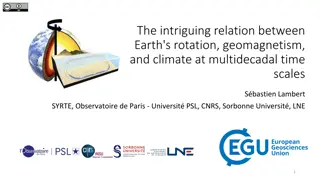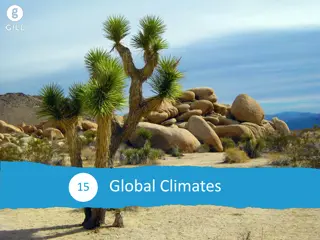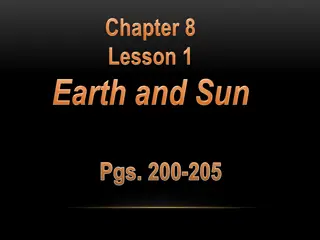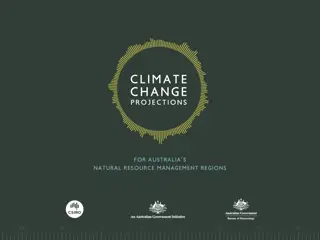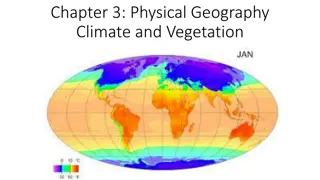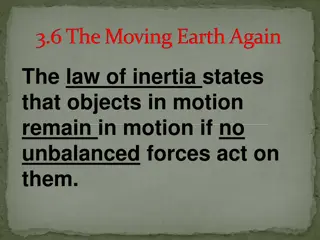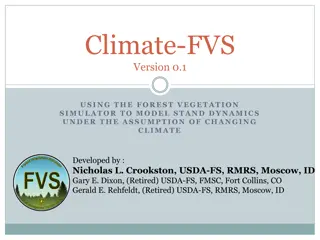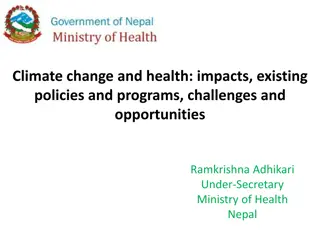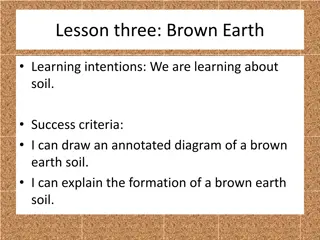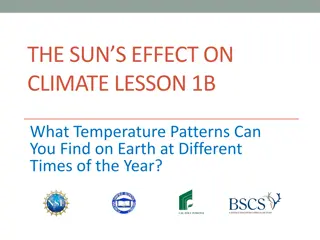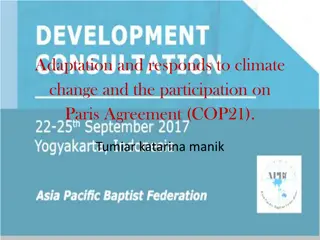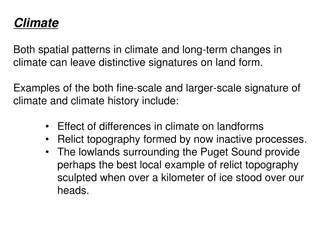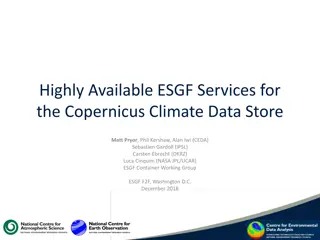Understanding Climate and Its Impact on Earth
Exploring the fundamentals of climate, this comprehensive guide covers topics such as climate zones, climate formation, atmospheric composition, the role of CO2, ocean heat absorption, and circulation patterns. From the basics of weather and seasons to the significant impact of climate change, learn how various elements interact to shape the climate of our planet.
Download Presentation

Please find below an Image/Link to download the presentation.
The content on the website is provided AS IS for your information and personal use only. It may not be sold, licensed, or shared on other websites without obtaining consent from the author. Download presentation by click this link. If you encounter any issues during the download, it is possible that the publisher has removed the file from their server.
E N D
Presentation Transcript
What is climate? Weather - The condition of Earth s atmosphere at a particular time and place Seasons - a time of the year marked by particular weather patterns and daylight hours, resulting from the earth's changing position with regard to the sun. Climate variation - short-term changes in climate that take place over months, seasons and years. This variability is the result of natural, large-scale features of the climate Climate change - a change in climate patterns from that can occur across decades to millions of years Climate - the AVERAGE weather conditions in a location over a long period of time (30 years)
How are Climates formed? Interaction between the hydrosphere, atmosphere, and cryosphere
Atmosphere Remember what the atmosphere is made of 78% Nitrogen 21% Oxygen 400 ppm Carbon Dioxide
Atmosphere How does CO2 affect the atmosphere? What would happen if there were too little CO2? What would happen if there were too much CO2?
Atmosphere Uneven heating of the earth creates circulating air cells Hot air rises - low pressure - rain Cold air falls - sunny - dry Warm air comes away from the equator Cold air comes away from the poles The circulation of the atmosphere distributes carbon dioxide evenly around the globe
Oceans The oceans has absorbed 90% of the heat gained by the planet Without the oceans the planet would be about 122 F The ocean is dark in color and has a low albedo. Absorbs light and traps heat
Oceans The Ocean holds 50X as much Carbon Dioxide as the atmosphere Carbon Dioxides comes out of the atmosphere and can get caught in the ocean to be stored for a period of time. Warmer waters don t hold as much carbon dioxide as cold water
Oceans Ocean circulation distributes heat and carbon dioxide around the planet Warm water moves away from the equator Cold water moves away from the poles Water temperature determines the climate of coastal regions Remember how the UK was warmer than Alaska, but they were at the same latitude?
Cryosphere What is the cryosphere? The region of the Earth s water and soil that is frozen Benefits of ice High albedo reflects light and keeps the area cool Ice cools the air and oceans which circulate cool air and water around the planet Traps water to keep ocean level down Ice traps CO2 that had been circulating in the ocean and the atmosphere
Cryosphere Glaciers - large frozen rivers - usually terminate at the ocean Ice Sheets - large areas of land covered in ice. Bigger than glaciers and icebergs Ice Bergs - Ice in the Ocean Permafrost - frozen soil. Traps a lot of carbon dioxide and methane.


